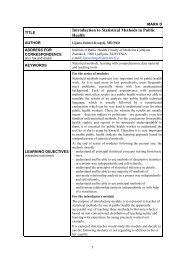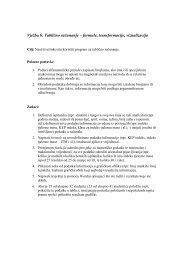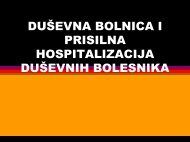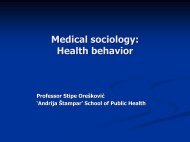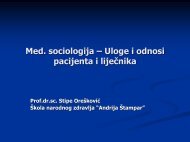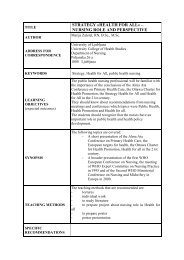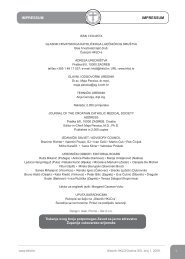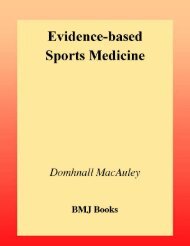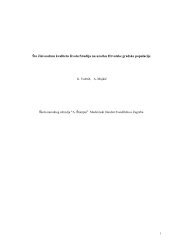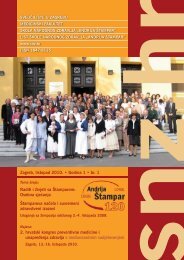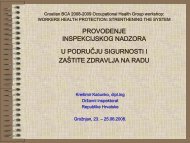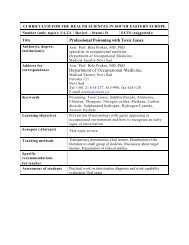STATISTINE METODE V EPIDEMIOLOGIJI
STATISTINE METODE V EPIDEMIOLOGIJI
STATISTINE METODE V EPIDEMIOLOGIJI
Create successful ePaper yourself
Turn your PDF publications into a flip-book with our unique Google optimized e-Paper software.
Studying material<br />
Studying material prepared for students, is composed of:<br />
1. A short manual for working with the SPSS program, so that they were able to<br />
start working by themselves with a program from the very beginning.<br />
2. Short summary of the subject, which was not intended as being the only<br />
source of statistical theory for the students, but to help directing their flow of<br />
thinking and as a help with practical work.<br />
3. Collection of exercises for practical work.<br />
4. Copies of the main results of the SPSS programme, so that the students are<br />
able to mark down their comments and explanations of printouts for helping<br />
them at studying.<br />
5. Advised textbook for deepening their theoretical knowledge, which could be find<br />
in a Central Library of Faculty of Medicine or bought for a reasonable price.<br />
Comments<br />
Using described methods, we consider several principles of andragogy:<br />
• students are actively involved in the educational process,<br />
• teacher is a facilitator and not just a supplier of facts;<br />
• use of life experiences and prior education is stimulated, as well as group<br />
interaction;<br />
• feedback from teacher is given in few days;<br />
The effectiveness of educational process is being evaluated through statistical<br />
analysis project, which is presented to other students.<br />
EXERCISE<br />
Introduction to Task 1: Micro-teaching exercise<br />
Rationale<br />
Lecture, the most often used method in teaching process, is only one of several ways<br />
of passing on factual information, giving an overview and motivating participants in<br />
teaching and learning process. Lectures should be carefully prepared, clearly<br />
structured and have defined SMART (specific, measurable, achievable, realistic and<br />
timing) aim and objectives. To lecture effectively requires that attention be paid to<br />
presentation skills and the use of any visual or technical resources.<br />
Learning objectives<br />
Learning objectives are:<br />
1. Practice lecturing an 8-10 minute segment of a planned teaching exercise;<br />
2. Analyse one's own and others' styles in a micro-teaching format.<br />
Task 1<br />
Participants:<br />
• prepare an 8-10 minute lesson on topic of their own choice,<br />
32



